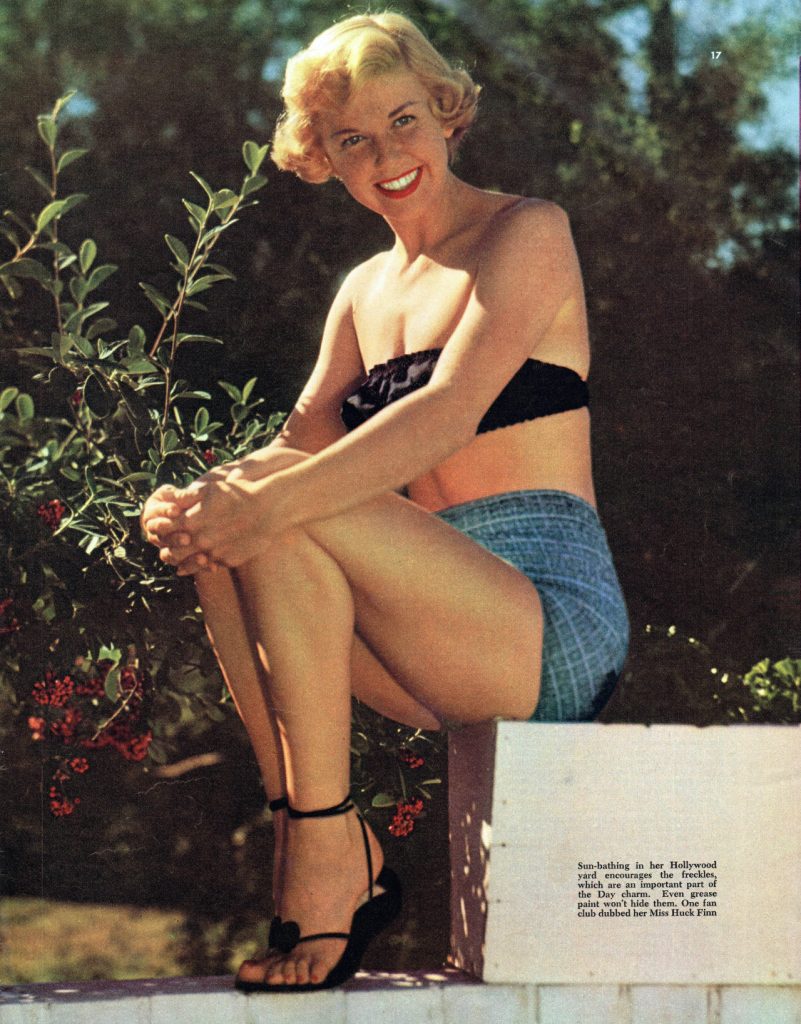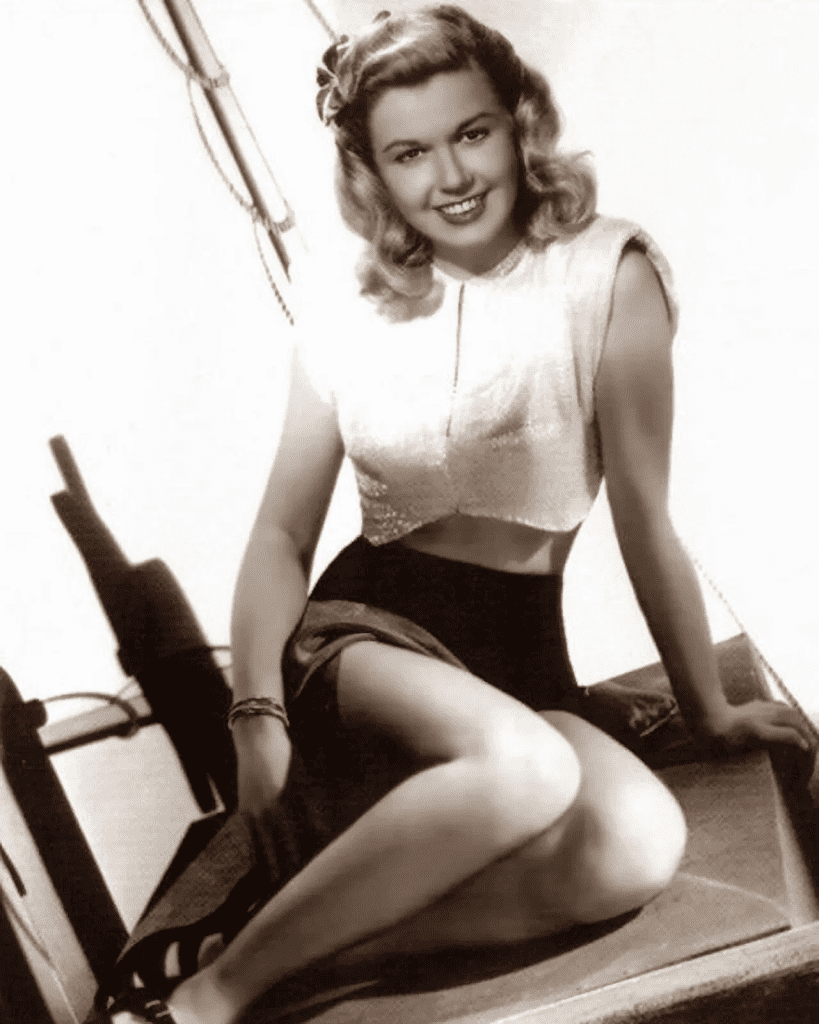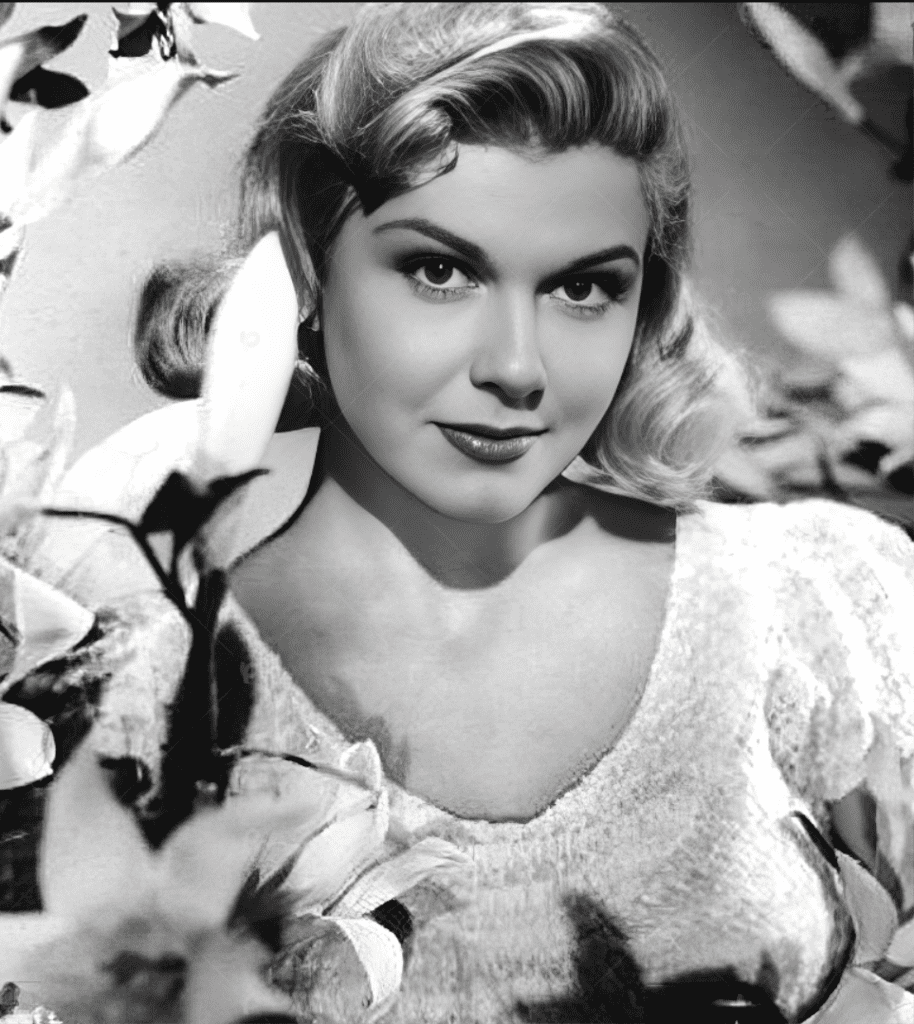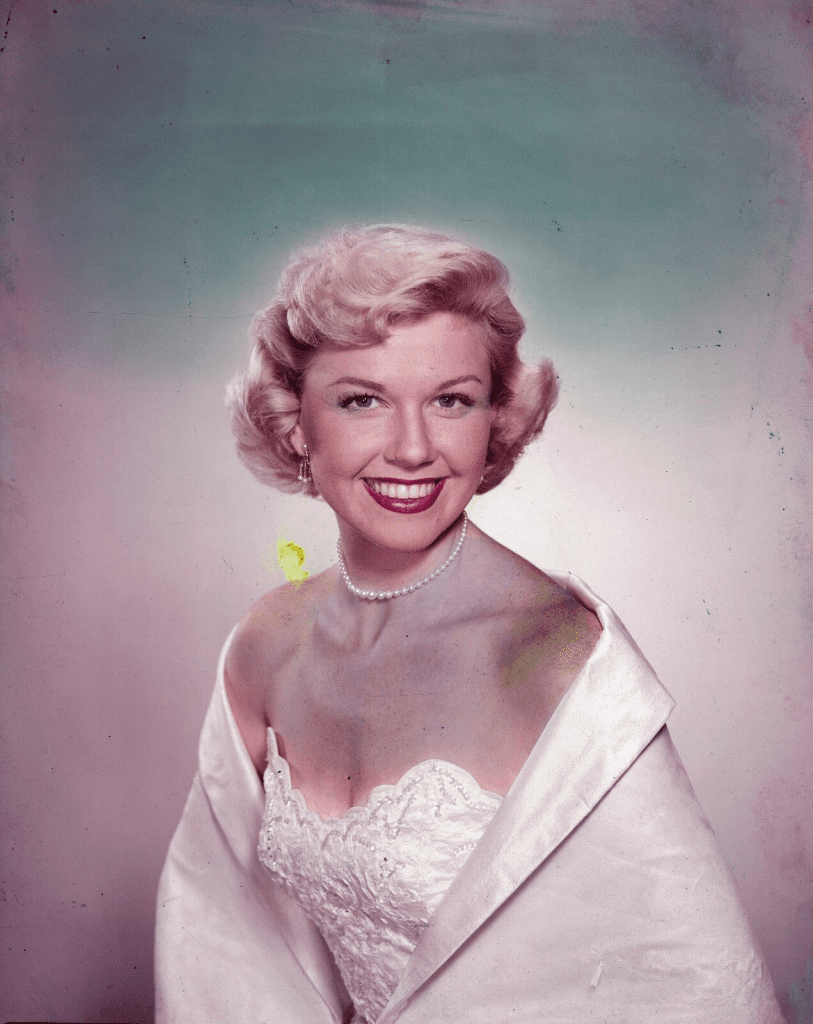When America Needed Comfort, She Was the Voice They Turned To
She was more than just a pretty face with a golden voice—she was comfort, hope, and strength wrapped in one elegant figure. Known as “The Girl Next Door,” she had a voice that warmed radio waves and a smile that lit up movie screens across the globe. Millions adored her cheerful charm, but behind her sunny exterior lay a lifetime of setbacks, struggles, and triumphs. Her journey through the spotlight was paved not only with hits and accolades—but also heartbreak, loss, and unshakable resilience. Yes, we’re talking about Doris Day.

Born for the Stage: The Rise From Cincinnati
Before she ever became a household name, Doris Day was Doris Mary Ann Kappelhoff, born on April 3, 1922, in Cincinnati, Ohio. Growing up in a German-American family, she was drawn to music and dance from an early age. A car accident at just 15 shattered her dreams of becoming a dancer—but instead of giving up, she pivoted. While bedridden, she sang along with Ella Fitzgerald on the radio, discovering a whole new passion.

Her mother recognized the spark and found her a vocal coach. That twist of fate turned a tragic moment into a launchpad for greatness.
Video : Doris Day dancing
Big Band Stardom: A Voice That Healed a Nation
At just 17, she joined Barney Rapp’s band, who suggested her stage name after hearing her perform “Day After Day.” Soon she was touring with Les Brown’s Band of Renown, and in 1945, her hit “Sentimental Journey” became the emotional anthem for soldiers returning from war. Her voice was more than entertainment—it was medicine for a weary country.

She went on to record over 650 songs, including timeless classics like “My Dreams Are Getting Better All the Time” and “Secret Love.” Each note she sang felt like a whisper of reassurance. And the world listened.
Breaking into Hollywood: Natural Talent on the Big Screen
Her transition from radio to film was seamless. In 1948, Warner Bros. gave her a shot with Romance on the High Seas—her first acting role. Most singers-turned-actresses took time to adjust. Not Doris. She shone from frame one. The song “It’s Magic” from that film became another hit, and her natural charisma won over producers and fans alike.

She starred in a string of musical hits like On Moonlight Bay and By the Light of the Silvery Moon, embodying the wholesome, cheerful American ideal—but there was so much more behind the smile.
Box Office Queen: From Calamity Jane to Hitchcock’s Muse
The 1950s and ‘60s cemented Doris Day as a true movie star. In Calamity Jane (1953), she surprised audiences with her tomboy swagger and vocal power. “Secret Love” from the film won an Oscar, and her performance showed she could balance spunk with sweetness effortlessly.

She proved her acting range in the drama Love Me or Leave Me (1955), where she portrayed real-life singer Ruth Etting opposite James Cagney. Critics praised her performance as bold, vulnerable, and utterly captivating.
Then came The Man Who Knew Too Much (1956), directed by Alfred Hitchcock. Her performance—and her haunting rendition of “Que Sera, Sera”—was unforgettable. The song won an Oscar and became her lifelong signature.

Rom-Com Royalty: Chemistry, Comedy, and Career Women
In the late ‘50s and early ‘60s, Doris Day became the queen of romantic comedies. She paired up with Rock Hudson in Pillow Talk (1959), sparking a chemistry so electric it earned her an Oscar nomination. They teamed up again in Lover Come Back and Send Me No Flowers, solidifying their on-screen magic.

She didn’t just play love interests—she played career women, smart and self-assured, navigating both boardrooms and romances. With Cary Grant (That Touch of Mink) and James Garner (The Thrill of It All), she delivered charm, wit, and impeccable comedic timing.
From Film to Television: Reinventing Stardom
As her film roles dwindled, she pivoted once again—this time to television. The Doris Day Show (1968–1973) followed a widowed mother navigating modern life. While she wasn’t fond of the show’s format, it connected with audiences and ran for five seasons. Once again, she showed she could lead any medium she touched.

Her presence on TV extended her reach to an entirely new generation. She made it look easy—even when she was quietly carrying enormous burdens behind the scenes.
Pain Behind the Smile: Turbulence in Her Personal Life
Despite her glowing reputation, Doris Day’s private life was full of heartache. She married four times—each ending in heartbreak. Her first husband, Al Jorden, was abusive. Her second marriage to George Weidler dissolved quickly. But it was her third husband, Martin Melcher, who brought the most devastating blow.

Melcher, who managed her career, left her deeply in debt after his death in 1968. She discovered he had mishandled millions of dollars and committed her to a television contract she didn’t even know about. Despite the betrayal, she fulfilled that contract with grace—because that’s who she was.
Her fourth and final marriage to Barry Comden ended in divorce as well. Yet through every setback, she pressed forward with unshakable poise.

The Love of a Mother and a Painful Goodbye
Her greatest joy was her son, Terry Melcher, a successful music producer. Their bond was strong, and his career kept her connected to the evolving world of music. Tragically, he passed away from cancer in 2004—a blow that no mother is ever truly prepared for.

Yet she carried on. Her love for him endured in everything she did, especially through the charitable work they shared.
Video : Doris Day slaps Rock
A New Mission: Advocating for Animals
In the 1970s, Doris Day quietly stepped back from entertainment to focus on something deeply personal: animal welfare. She co-founded groups, launched the Doris Day Animal Foundation, and became one of the most prominent voices for humane treatment of animals.

Whether it was spay-and-neuter advocacy, rescuing abandoned pets, or fundraising for shelters, she dedicated the rest of her life to protecting animals. She often said animals gave her unconditional love—the kind she had so often longed for in her personal life.

Final Years in Carmel: A Life Lived on Her Terms
Doris Day spent her final years in the quiet town of Carmel, California. Surrounded by friends and animals, she lived peacefully, far from the spotlight she once commanded. She passed away in 2019 at the age of 97.
She left behind no public funeral and requested no memorial service. It was just like her—modest, kind, and content to let her legacy speak for itself.

Conclusion: Doris Day’s Shine Never Dimmed
Doris Day wasn’t just America’s sweetheart. She was America’s anchor—through war, loss, and changing times. Her voice gave hope. Her films gave joy. Her advocacy gave love.

She was underestimated, overburdened, and often overlooked in ways the public never saw. But she kept showing up, kept giving, and kept smiling. From heartbreaking songs to laugh-out-loud comedies, from personal tragedy to public grace—Doris Day lived with a light that still glows long after the curtain closed.

And maybe that’s what made her shine so brightly—not just her talent, but her ability to carry on with kindness, strength, and a soft but unshakable resolve.
Que sera, sera—whatever will be, will be. But for Doris Day, what was… will always be unforgettable.